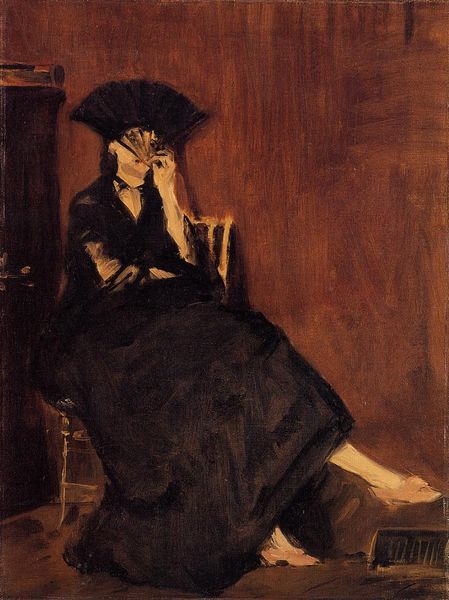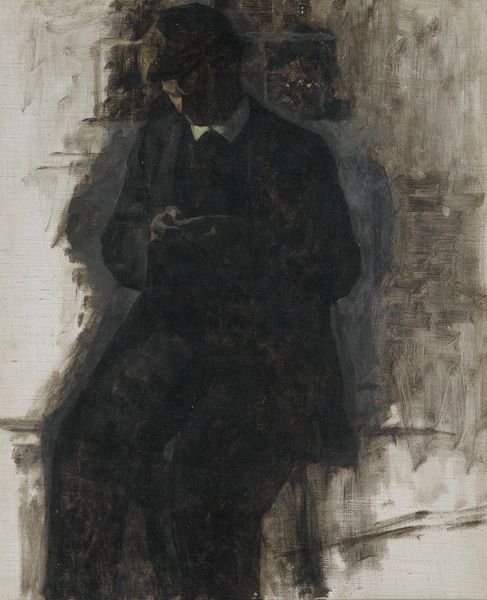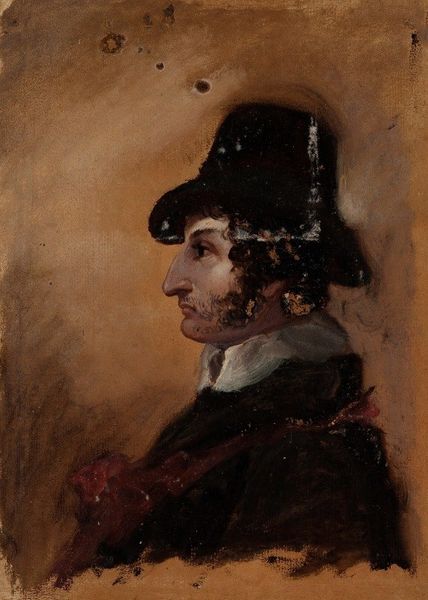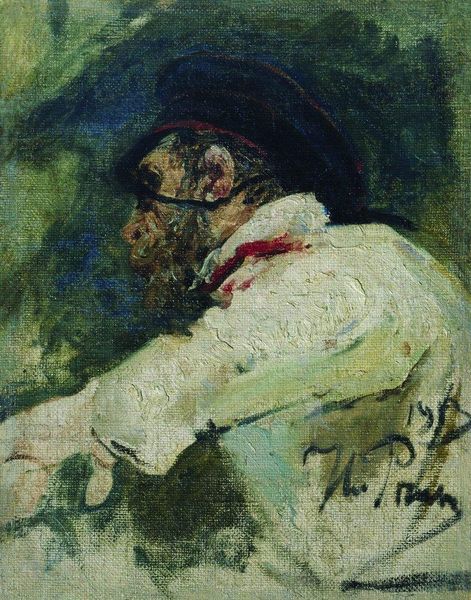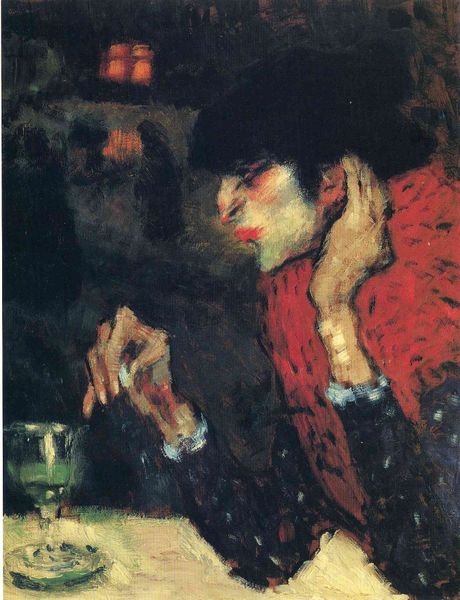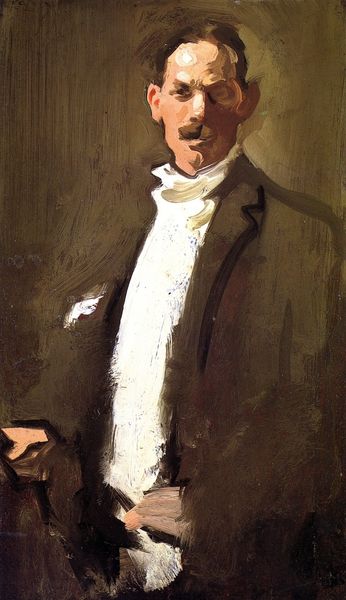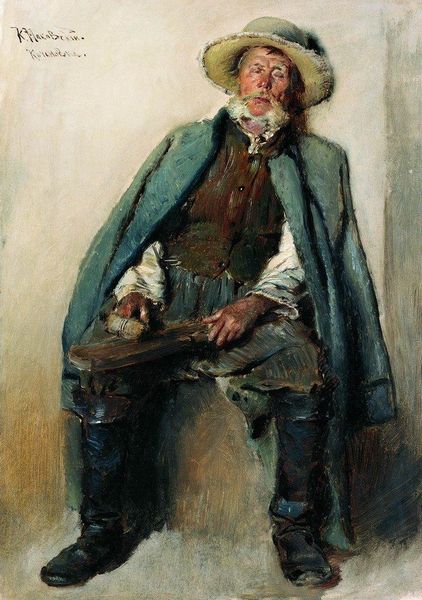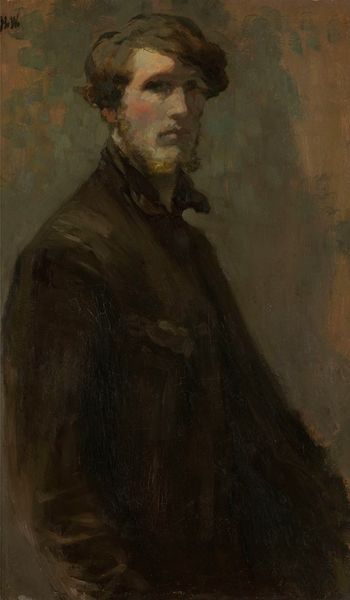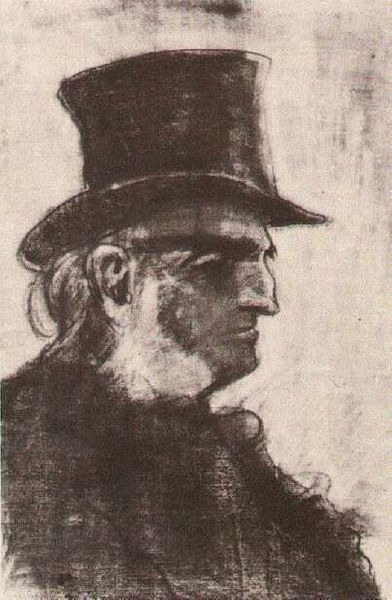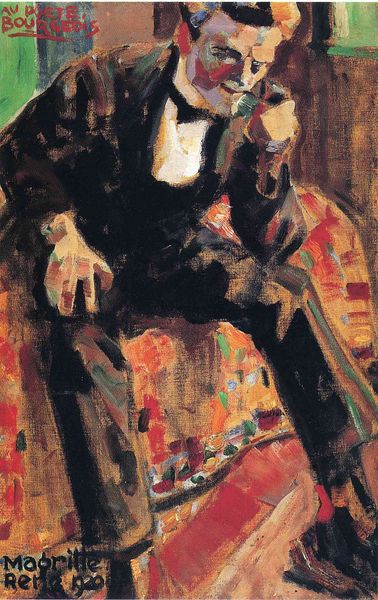
#
portrait
#
possibly oil pastel
#
oil painting
#
portrait reference
#
acrylic on canvas
#
underpainting
#
animal drawing portrait
#
portrait drawing
#
facial portrait
#
portrait art
#
female-portraits
#
digital portrait
Copyright: Public domain
Curator: Oh, hello! We're standing before Édouard Manet's *A Veiled Young Woman* from 1872. The fleeting brushstrokes, the almost brutal abstraction… it’s oil on canvas, of course, but it feels so much rawer than just "paint." Editor: Raw is right! Honestly, my first thought wasn't "masterpiece," but a sort of startled recoiling. It's unfinished, almost ghostly, with that obscured face looming from the canvas. A captivatingly unsettling vibe. Curator: Yes, there’s an incompleteness that gets under your skin. This was painted during a time of huge social and political change. Consider the aftershocks of the Franco-Prussian War. Manet served in the National Guard, saw firsthand the devastation, and *A Veiled Young Woman* stands as a subtle response against traditional, polished portraiture meant to beautify and aggrandize. It’s a visual interruption of that societal expectation. Editor: Absolutely. I read it as almost a critique of those portrait traditions – showing the woman veiled and anonymous perhaps representing the ways society stifles or obscures individual identity. It makes you wonder about the model, doesn’t it? Who was she? Was this incompleteness intentional on Manet’s part to convey anonymity, a symbol of the era perhaps? Curator: Those brushstrokes too—they don't try to blend perfectly. They create this swirling vortex of color that really captures the mood of Paris then—turbulent, uncertain, but also alive with a new sense of artistic and social liberty. Manet challenges academic painting conventions to provoke dialogue about how we perceive ourselves. Editor: You put it so well! And it’s fascinating to think about how Manet saw beauty in imperfection, embracing the sketch-like quality. This era prioritized academic style over raw human portrayal. This feels like defiance—a bold refusal to sugarcoat the truths he saw. A reminder of how society can both reveal and conceal the individual at the same time. Curator: It’s certainly an enduring piece. It has an extraordinary quality. It invites, provokes, demands that we truly *see*, both within the painting, and, most crucially, beyond. Editor: Precisely! *A Veiled Young Woman* becomes a potent emblem of its historical era and humanity—all with those suggestive, yet, daringly sparse brushstrokes!
Comments
No comments
Be the first to comment and join the conversation on the ultimate creative platform.
